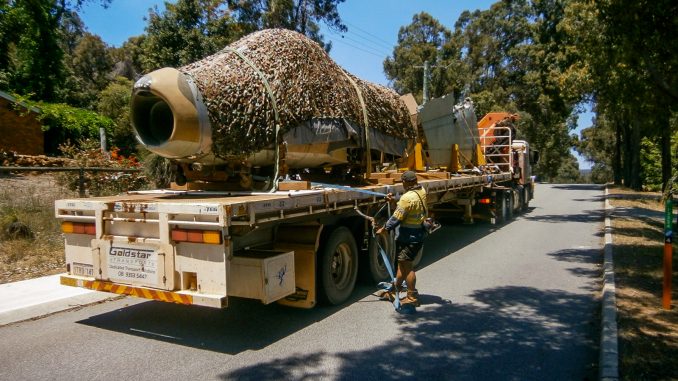
From The Scrap Heap to Salvation – A Sabre is Reborn
by Phil Buckley
Tucked away in Western Australia is a growing list of famous warbird types, which also includes jets these days. One of the latter which is fortunate to have survived is a Canadair CL13B Sabre Mk.6 jet fighter which has literally travelled around the world before arriving at its present home “down under” in Australia. The aircraft is a Canadian-built variant of the North American F-86 Sabre, with construction number 1492 and RCAF serial 23702. She was one of a batch of 34 examples which Canadair produced for the South African Air Force (SAAF) in 1956.
So just how does an ex-SAAF Sabre jet end up down under, you might ask? In the early 1950s, No.2 Squadron SAAF was operating P-51 Mustangs in South Korea as fighter bombers. But after exhaustive operations in the Korean War, these Mustangs were worn out and essentially obsolete given the advances of the jet age then in full swing. The SAAF was able to replace these Mustangs with a small number of F-86 Sabres which they received on loan from the USAF jets, but had to hand them back once the war ended. But their brief period of using these Sabres during the Korean conflict gave the SAAF a keen interest in acquiring some of their own.
In 1955, the South African Air Force purchased a small fleet of Canadair Sabre Mk.6 (RCAF serials 23669 through 23702), roughly enough to equip two squadrons. The first of them arrived in South Africa during 1956, and the 34 Sabres received SAAF serial numbers 350 to 383; the subject aircraft being SAAF 383, seen in service HERE. Intriguingly, being an officially bilingual country at the time, half of the Sabres were assigned to No.1 Squadron with Afrikaans markings, while the others joined No. 2 Squadron with English markings.
The Sabre had a relatively brief life in front-line SAAF service, with the next generation of jet fighters, in the form of French Dassault Mirage IIICZ, arriving to re-equip No.1 Squadron in 1964. Interestingly though, No.2 Squadron kept their Sabres until 1976, when the Dassault Mirage F.1Az ground attack aircraft replaced them.
Following retirement, the subject aircraft spent time as an instructional airframe at the Kempton Park Technical Collage, before a South African in Lanseria purchased the fighter. At some point, the aircraft moved to New Zealand, as it was noted in dismantled state at Ardmore in March 2008, but it was likely only a brief stay, as she moved to Australia soon after as the property of Bill Whyllie, who stored the aircraft at Panama Jacks Aircraft Restoration at Jandakot Airport in Western Australia. It was part of his collection until the early 2010s. Sadly Bill died in 2013 and, somehow, this Sabre ended up in a scrap yard, which is where members of the Royal Australian Air Force Association’s Bull Creek Museum found her. With a short timeframe before the scrapper was due to demolish the aircraft, the museum managed to acquire her for AU$2,000, which seems an extremely affordable price for such a legendary aircraft! It was an intriguing misfit, to be honest, as it didn’t fit their collection priorities, but they simply had to save the airframe. Having no space for the Sabre indoors, they stored the dismantled airframe under tarpaulins outdoors, as seen in the photos from 2016 below.
A NEW LIFE
While at RAAFA Bull Creek, the Sabre sat outdoors between the two museum hangars; museum staff indicated that it was perhaps too difficult to restore. Enter Wayne Henderson; he has been restoring vintage military vehicles and artillery pieces for over 30 years, but has always wanted an aircraft to own and restore. In 2019, one of Henderson’s friends told him about the Sabre jet languishing in pieces at the local RAAFA museum. Henderson visited the museum soon after, and entered into discussions to acquire the unwanted Sabre. After several meetings, the two parties came to an agreement, and Henderson had the fighter delivered to his workshop as pictured in the image below.
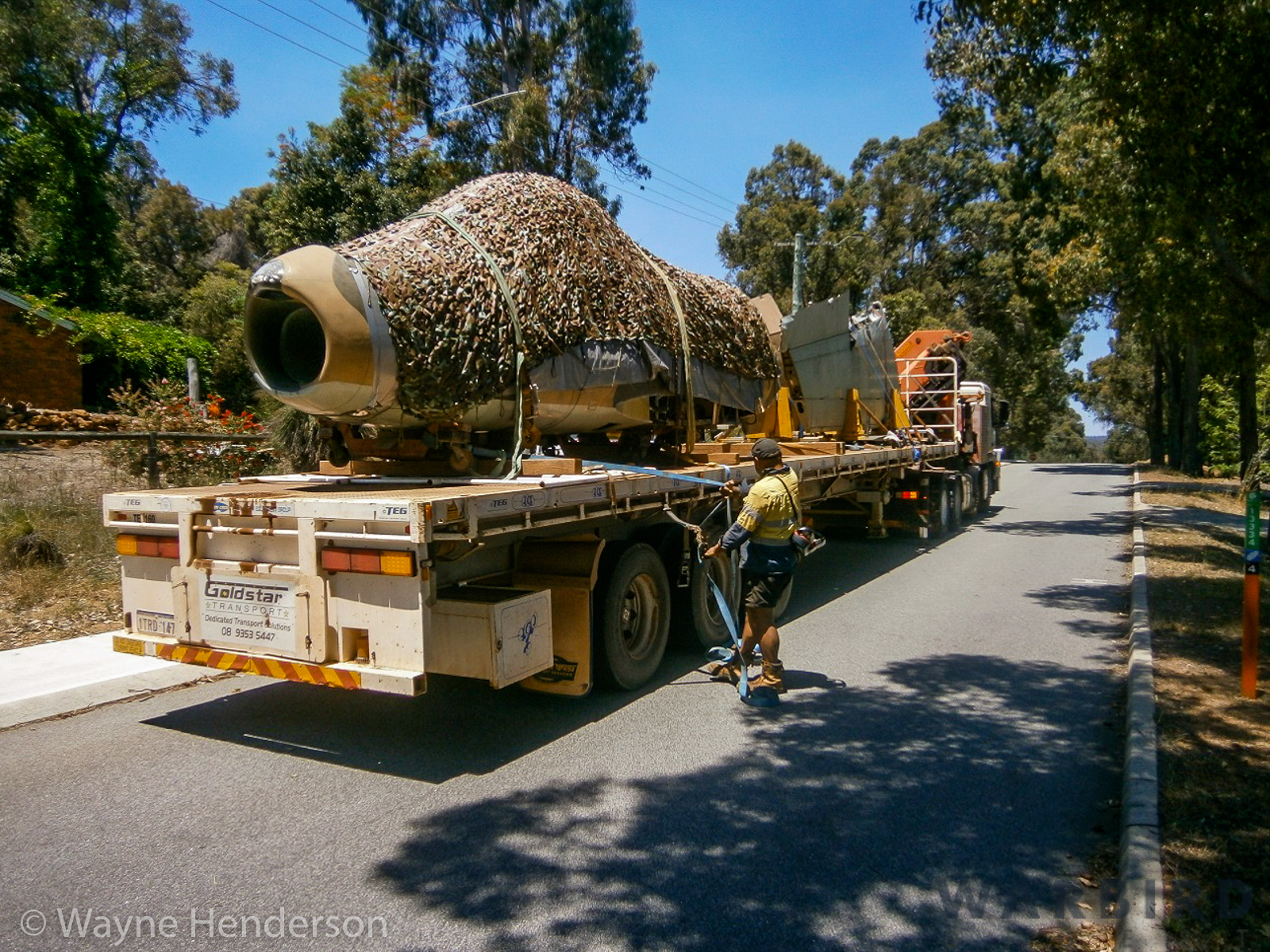
RESTORATION WORK
Interestingly, this is the only Sabre currently in Australia which wasn’t originally manufactured there; all other examples in the nation originally rolled off the production line at the Commonwealth Aircraft Corporation (CAC) factory at Fisherman’s Bend in Melbourne, Victoria. CAC-built aircraft used the Rolls-Royce Avon to power them, which necessitated significant structural changes, but there are several other important differences in the Orenda-engined Canadair Sabre. The point being that the spares-source for Canadair-specific Sabres isn’t particularly bountiful in Australia.
Even so, Henderson set to work on the restoration soon after it arrived at his facility. By May, 2020, he had stripped the fuselage paint and was working on sheet metal repairs in the rear section. The wings are currently stored separately and awaiting attention at a future date.
Henderson noted that, “This Sabre jet aircraft is quite complete for display purposes, but is missing several panels. There is a fair bit of damage to the rear fuselage section and one wing requires some work. The rear section is on a rotisserie, and panel work is progressing.” He further indicated that, “Most of the missing panels are not interchangeable [with CAC-built examples], except the tail feathers. I have a lot of work to do in the cockpit with the instrument panel frame, throttle grip, joystick grip needing to be acquired to finalize this area.”
Looking around the airframe Henderson stated, “I am looking for more parts which include the tail feathers, both gun bay doors, both gun muzzle doors, a radio compartment door and wing tip assemblies.” He is keen to get hold of Sabre blueprints so he can make his own panels if necessary. The forward fuselage area, cockpit and T-4E-1 ejection seat also need restoring.
Once the airframe is fully rebuilt, Henderson is considering finishing the Sabre in a bare, unpolished metal condition, and applying the checker-tail markings of the U.S. Air Force’s 51st FIW. He is keen to hear from anyone who can help him locate the afore-mentioned spare parts, and can be contacted at highlandhendos@westnet.com.au.
Many thanks indeed to Phil Buckley for sharing this story and photographs with us. We wish Wayne Henderson well with the restoration of this interesting airframe!

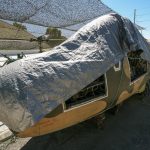
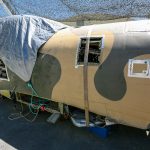
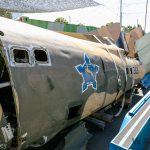
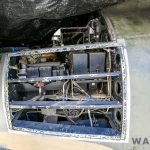
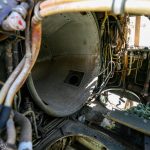
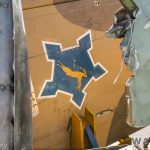
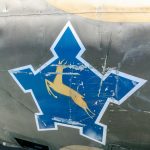
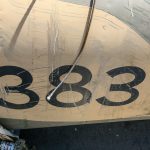
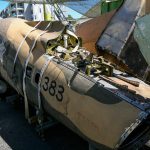
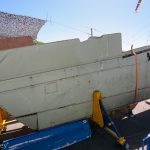
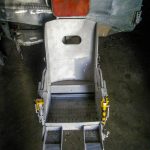
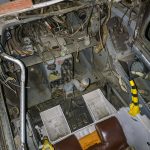
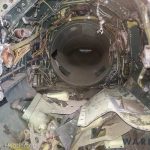
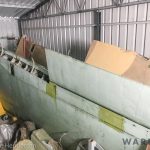

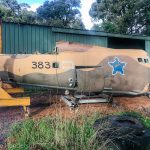
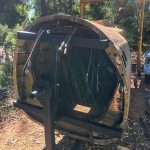
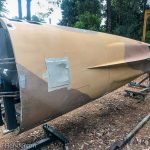
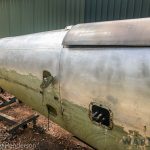
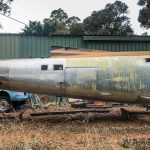
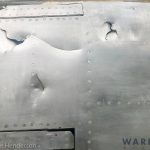
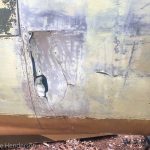
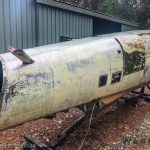
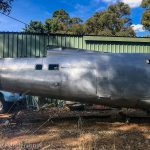
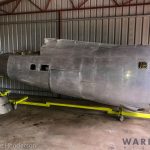
Be the first to comment
Graphic Design, Branding and Aviation Art